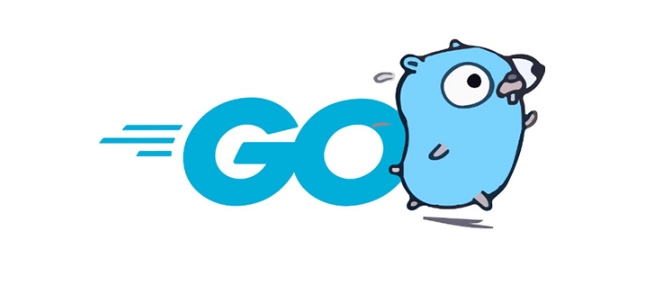嵌入如何影响我的二进制尺寸?
//go:embed 不会自身增加二进制体积,但嵌入的文件会直接增加体积。1. 使用 //go:embed 会将文件内容(如 HTML、JSON、图像等)编译进二进制文件,导致体积增加与嵌入文件大小相当。2. 该指令本身无额外开销,体积增长完全取决于嵌入的数据量,例如嵌入 5 MB 的 JavaScript 文件会使二进制文件增大约 5 MB。3. 可通过对比构建前后二进制大小(如使用 go build 和 ls -lh)或使用 go tool nm 检查数据段来评估影响。4. 为减小影响,应避免嵌入大文件(如视频、未压缩资源),优先压缩(如最小化 HTML/CSS/JS),并考虑使用构建标签在生产环境中嵌入而在开发中外部加载。5. 权衡在于://go:embed 提升部署便利性并消除运行时 I/O 错误,但代价是二进制变大、启动可能变慢以及可能包含未使用的资源。总之,//go:embed 本身不造成膨胀,体积增长完全由嵌入文件决定,对小型或中等资源(如配置、模板、静态界面)嵌入是合理选择,对大型资源则需谨慎评估或预先优化。

Using Go’s //go:embed directive doesn’t inherently bloat your binary size more than other ways of including data — but it does embed files directly into the binary, so the impact depends on what you're embedding and how you're using it.

Here’s what you need to know:
✅ //go:embed adds file contents to the binary
When you use //go:embed, the content of the specified files (like HTML, JSON, images, etc.) is compiled directly into the executable. This means:

- The binary size increases by roughly the size of the embedded files.
- No external files are needed at runtime — everything is self-contained.
For example:
//go:embed templates/* var templatesFS embed.FS
All files in the templates/ directory are now part of the binary.

? Binary size impact: It’s about the data, not the directive
The //go:embed directive itself adds no overhead. The size increase comes entirely from the files you embed.
| Embedded Content | Size Impact |
|---|---|
| 10 KB of JSON | ~ 10 KB |
| 1 MB image | ~ 1 MB |
| Static site (HTML/CSS) | Can add several MB |
So if you embed a 5 MB JavaScript bundle, your binary will be ~5 MB larger — whether you use embed.FS, go:generate, or a third-party tool.
? How to check the impact
You can compare binary sizes before and after embedding:
# Build without embedded assets go build -o app-no-assets . # Build with embedded assets go build -o app-with-assets . # Compare sizes ls -lh app-*
Also, use go tool nm or objdump to see if large strings or data sections were added.
? Tips to minimize impact
If binary size matters (e.g., for microservices, CLI tools, or cold starts in serverless):
- Avoid embedding large files like videos, big images, or unminified JS/CSS.
- Compress assets if possible (e.g., minify HTML/CSS/JS before embedding).
- Use build tags to create "lite" versions without embedded assets in development:
//go:embed production-assets/* // build release
- Consider loading assets externally in dev, but embed only in production builds.
- ✅ Simpler deployment
- ✅ No I/O errors loading templates/assets
- ❌ Larger binary
- ❌ Slower startup if loading huge embedded FS
- ❌ Binary may contain unused assets
⚖️ Trade-offs: Convenience vs. Size
//go:embed makes deployment easier — one binary, no dependencies. But you pay with size.
It’s a classic trade-off:
Bottom line
//go:embed doesn’t add bloat by itself — it just includes your files.
The bigger the files you embed, the bigger your binary.
So: embed wisely. For small to moderate assets (configs, templates, static UI), it's perfectly fine. For large media or bundles, think twice — or optimize them first.
Basically: you get exactly what you ask for — no magic, no hidden tax, just your files in the binary.
以上是嵌入如何影响我的二进制尺寸?的详细内容。更多信息请关注PHP中文网其他相关文章!

热AI工具

Undress AI Tool
免费脱衣服图片

Undresser.AI Undress
人工智能驱动的应用程序,用于创建逼真的裸体照片

AI Clothes Remover
用于从照片中去除衣服的在线人工智能工具。

Clothoff.io
AI脱衣机

Video Face Swap
使用我们完全免费的人工智能换脸工具轻松在任何视频中换脸!

热门文章

热工具

记事本++7.3.1
好用且免费的代码编辑器

SublimeText3汉化版
中文版,非常好用

禅工作室 13.0.1
功能强大的PHP集成开发环境

Dreamweaver CS6
视觉化网页开发工具

SublimeText3 Mac版
神级代码编辑软件(SublimeText3)
 以身作则http中间件记录示例
Aug 03, 2025 am 11:35 AM
以身作则http中间件记录示例
Aug 03, 2025 am 11:35 AM
Go中的HTTP日志中间件可记录请求方法、路径、客户端IP和耗时,1.使用http.HandlerFunc包装处理器,2.在调用next.ServeHTTP前后记录开始时间和结束时间,3.通过r.RemoteAddr和X-Forwarded-For头获取真实客户端IP,4.利用log.Printf输出请求日志,5.将中间件应用于ServeMux实现全局日志记录,完整示例代码已验证可运行,适用于中小型项目起步,扩展建议包括捕获状态码、支持JSON日志和请求ID追踪。
 Switch语句如何运行?
Jul 30, 2025 am 05:11 AM
Switch语句如何运行?
Jul 30, 2025 am 05:11 AM
Go的switch语句默认不会贯穿执行,匹配到第一个条件后自动退出。1.switch以关键字开始并可带一个值或不带值;2.case按顺序从上到下匹配,仅运行第一个匹配项;3.可通过逗号列出多个条件来匹配同一case;4.不需要手动添加break,但可用fallthrough强制贯穿;5.default用于未匹配到的情况,通常放最后。
 您如何与Golang的环境变量合作?
Aug 19, 2025 pm 02:06 PM
您如何与Golang的环境变量合作?
Aug 19, 2025 pm 02:06 PM
Goprovidesbuilt-insupportforhandlingenvironmentvariablesviatheospackage,enablingdeveloperstoread,set,andmanageenvironmentdatasecurelyandefficiently.Toreadavariable,useos.Getenv("KEY"),whichreturnsanemptystringifthekeyisnotset,orcombineos.Lo
 以示例运行子过程
Aug 06, 2025 am 09:05 AM
以示例运行子过程
Aug 06, 2025 am 09:05 AM
使用os/exec包运行子进程,通过exec.Command创建命令但不立即执行;2.使用.Output()运行命令并捕获stdout,若退出码非零则返回exec.ExitError;3.使用.Start()非阻塞启动进程,结合.StdoutPipe()实时流式输出;4.通过.StdinPipe()向进程输入数据,写入后需关闭管道并调用.Wait()等待结束;5.必须处理exec.ExitError以获取失败命令的退出码和stderr,避免僵尸进程。
 GO应用程序的标准项目布局是什么?
Aug 02, 2025 pm 02:31 PM
GO应用程序的标准项目布局是什么?
Aug 02, 2025 pm 02:31 PM
答案是:Go应用没有强制项目布局,但社区普遍采用一种标准结构以提升可维护性和扩展性。1.cmd/存放程序入口,每个子目录对应一个可执行文件,如cmd/myapp/main.go;2.internal/存放私有代码,不可被外部模块导入,用于封装业务逻辑和服务;3.pkg/存放可公开复用的库,供其他项目导入;4.api/可选,存放OpenAPI、Protobuf等API定义文件;5.config/、scripts/、web/分别存放配置文件、脚本和Web资源;6.根目录包含go.mod和go.sum
 您如何使用诸如if-else in go中的条件语句?
Aug 02, 2025 pm 03:16 PM
您如何使用诸如if-else in go中的条件语句?
Aug 02, 2025 pm 03:16 PM
Go中的if-else语句无需括号但必须使用花括号,支持在if中初始化变量以限制作用域,可通过elseif链式判断条件,常用于错误检查,且变量声明与条件结合可提升代码简洁性与安全性。
 建立表演者为第三方API的客户
Jul 30, 2025 am 01:09 AM
建立表演者为第三方API的客户
Jul 30, 2025 am 01:09 AM
使用专用且配置合理的HTTP客户端,设置超时和连接池以提升性能和资源利用率;2.实现带指数退避和抖动的重试机制,仅对5xx、网络错误和429状态码重试,并遵守Retry-After头;3.对静态数据如用户信息使用缓存(如sync.Map或Redis),设置合理TTL,避免重复请求;4.使用信号量或rate.Limiter限制并发和请求速率,防止被限流或封禁;5.将API封装为接口,便于测试、mock和添加日志、追踪等中间件;6.通过结构化日志和指标监控请求时长、错误率、状态码和重试次数,结合Op
 Go Run命令做什么?
Aug 03, 2025 am 03:49 AM
Go Run命令做什么?
Aug 03, 2025 am 03:49 AM
gorun是一个用于快速编译并执行Go程序的命令,1.它在一步中完成编译和运行,生成临时可执行文件并在程序结束后删除;2.适用于包含main函数的独立程序,便于开发和测试;3.支持多文件运行,可通过gorun*.go或列出所有文件执行;4.自动处理依赖,利用模块系统解析外部包;5.不适用于库或包,且不生成持久化二进制文件,因此适合脚本、学习和频繁修改时的快速测试,是一种高效、简洁的即时运行方式。







